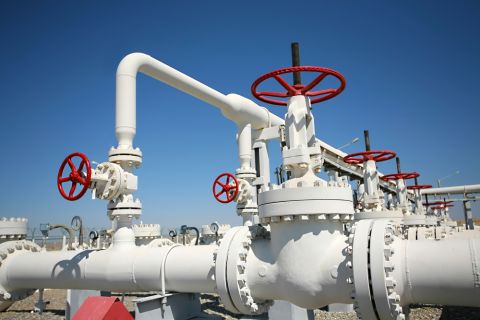
Analysts are optimistic about Argentina's offshore oil and gas sector, while concerns surround development of the Vaca Muerta Shale. (Source: Shutterstock.com)
RIO DE JANEIRO—Argentina’s Vaca Muerta Shale has been seen as one of the world’s most promising areas for unconventional oil and gas development, but it has been slow to take off.
The sluggish pace follows an ambitious investment program, launched in 2013 by Argentina’s government, which aimed to increase the country’s fossil fuel production by 2025. The increase would also improve the country’s economic recovery.
However, the plan faces fiscal, market, political and environmental obstacles that may compromise its viability, according to a report recently released by the Institute for Energy Economics and Financial Analysis (IEEFA). The area is facing such strong headwinds that “the plan is likely to fail,” IEEFA said.
“The Vaca Muerta extraction plan promises subsidies that are unaffordable, relies on a financially weak Argentine business team and hopes to attract global oil and gas companies when there are much better opportunities elsewhere,” said IEEFA finance director Tom Sanzillo, who co-authored the report. “Over the last six years, foreign investors have signed agreements with the biggest names in the oil and gas business, but progress is slow, commitments are thin and future plans unrealistic.”
The expert said investors are concerned about the slow pace of development in Vaca Muerta, which is located in northern Patagonia, compared with other unconventional oil- and gas-producing regions such as the Permian Basin and Eagle Ford in the United States.
Most of the majors involved in Vaca Muerta have already made it clear that their participation will be based on subsidies. Financial commitments so far have been small. The industry faces investors who are increasingly questioning highly speculative investments, according to the report. Over the past six years, 31 projects have been launched in Vaca Muerta. Only five are in development, and some of them are now under threat.
“Six years in, Vaca Muerta has completed only 342 unconventional oil and gas wells. By contrast, in 2014, six years into aggressive development of the Permian Basin, 3,560 wells were in production. Eagle Ford completed 478 wells after merely two years of development,” IEEFA said in the report. The abrupt reduction in Argentina’s production subsidy program—announced in January 2019 but applied retroactively for 2018 production—is shaking investor confidence.”
Dependent on Gas
Argentina is highly dependent on gas. On average, domestic production accounts for about 80% of total demand along with imports from Bolivia, which has a contract to provide about 27 million cubic meters per day, and the spot LNG market, through its own terminals and imported by Chile. With the likely output decline, investment in exploration has become essential, according to Lanna Santos, an oil and gas expert at Prisma E&T Consultores, a consulting group located in Rio de Janeiro.
“Given the possible scenario that Argentina’s domestic supply will not reach what was expected, due to uncertainty regarding subsidies, this area of abundance is reversed and it may be that the country resumes LNG imports and maintains import levels of the Bolivia,” Santos said. “But now there is an aggravating fact that Bolivia is struggling to increase its production due to its decreasing reserve and increasing domestic demand.”
When the government recently announced the reduction of fiscal subsidies for the Vaca Muerta area due to the country’s financial crisis—a move that also halted any new projects, Moody’s rating agency deemed the action “credit negative” for Tecpetrol, YPF and Pan American Energy, which is owned by BP Plc and Bridas Corp. Other companies impacted by the decision include Total, Wintershall and Exxon Mobil Corp.
IEEFA also lists risks faced by Argentina’s plan for Vaca Muerta. The risks include:
- Unstable economics of unconventional oil and gas exploration that include high production costs compared to the rest of the world;
- High infrastructure costs to support oil and gas production and to protect the environment;
- Lack of interest and investment from oil service supply companies;
- Political and policy instability that add unplanned costs due to actions by national and provincial governments and
- Unstable domestic energy markets due to actions by provincial governments that may not align with those of the national government.
“In light of the many economic and political challenges it faces, the country’s oil and gas production goals seem overly optimistic,” IEEFA said in the report. “The likelihood of these underlying risks emerging will likely ensure that the goals will not be met. How the production shortfalls and energy policy missteps are managed will determine how Argentina’s energy future develops.”
Looking Offshore
As Vaca Muerta faces obstacles, Argentina’s offshore segment seems to have a more optimistic future. Argentina’s first national offshore licensing round, which took place April 16, was considered successful, according to Wood Mackenzie. Of the 38 blocks offered in an open bid round, 18 were licensed. The round attracted bids from 13 companies, with the winning bids totaling US$718.28 million. All majors, excluding Chevron, participated in the bidding.
The acreage is located in the Austral Marine, Western Malvinas and Argentina basins.
“The Argentinian government designed very competitive terms for this round, acknowledging the frontier nature of the acreage, and demonstrated its focused intent on attracting explorers that will carry out the initial de-risking, rather than generating revenue,” said Horacio Cuenca, research director for Wood Mackenzie.
The terms were appealing enough to attract companies with the technical capabilities and deep enough pockets to chase this high-risk acreage, Cuenca said.
“Most of the bidders already had a presence in the country, having taken significant positions in the Vaca Muerta shale play,” he said.
Cuenca also mentioned that half of all of the oil discovered in a play is found before first production from the first field developed in the areas auctioned. “We also find that frontiers deliver the highest value creation,” Cuenca said.
Recommended Reading
Brett: Oil M&A Outlook is Strong, Even With Bifurcation in Valuations
2024-04-18 - Valuations across major basins are experiencing a very divergent bifurcation as value rushes back toward high-quality undeveloped properties.
Marketed: BKV Chelsea 214 Well Package in Marcellus Shale
2024-04-18 - BKV Chelsea has retained EnergyNet for the sale of a 214 non-operated well package in Bradford, Lycoming, Sullivan, Susquehanna, Tioga and Wyoming counties, Pennsylvania.
Defeating the ‘Four Horseman’ of Flow Assurance
2024-04-18 - Service companies combine processes and techniques to mitigate the impact of paraffin, asphaltenes, hydrates and scale on production — and keep the cash flowing.
Santos’ Pikka Phase 1 in Alaska to Deliver First Oil by 2026
2024-04-18 - Australia's Santos expects first oil to flow from the 80,000 bbl/d Pikka Phase 1 project in Alaska by 2026, diversifying Santos' portfolio and reducing geographic concentration risk.
Ozark Gas Transmission’s Pipeline Supply Access Project in Service
2024-04-18 - Black Bear Transmission’s subsidiary Ozark Gas Transmission placed its supply access project in service on April 8, providing increased gas supply reliability for Ozark shippers.




